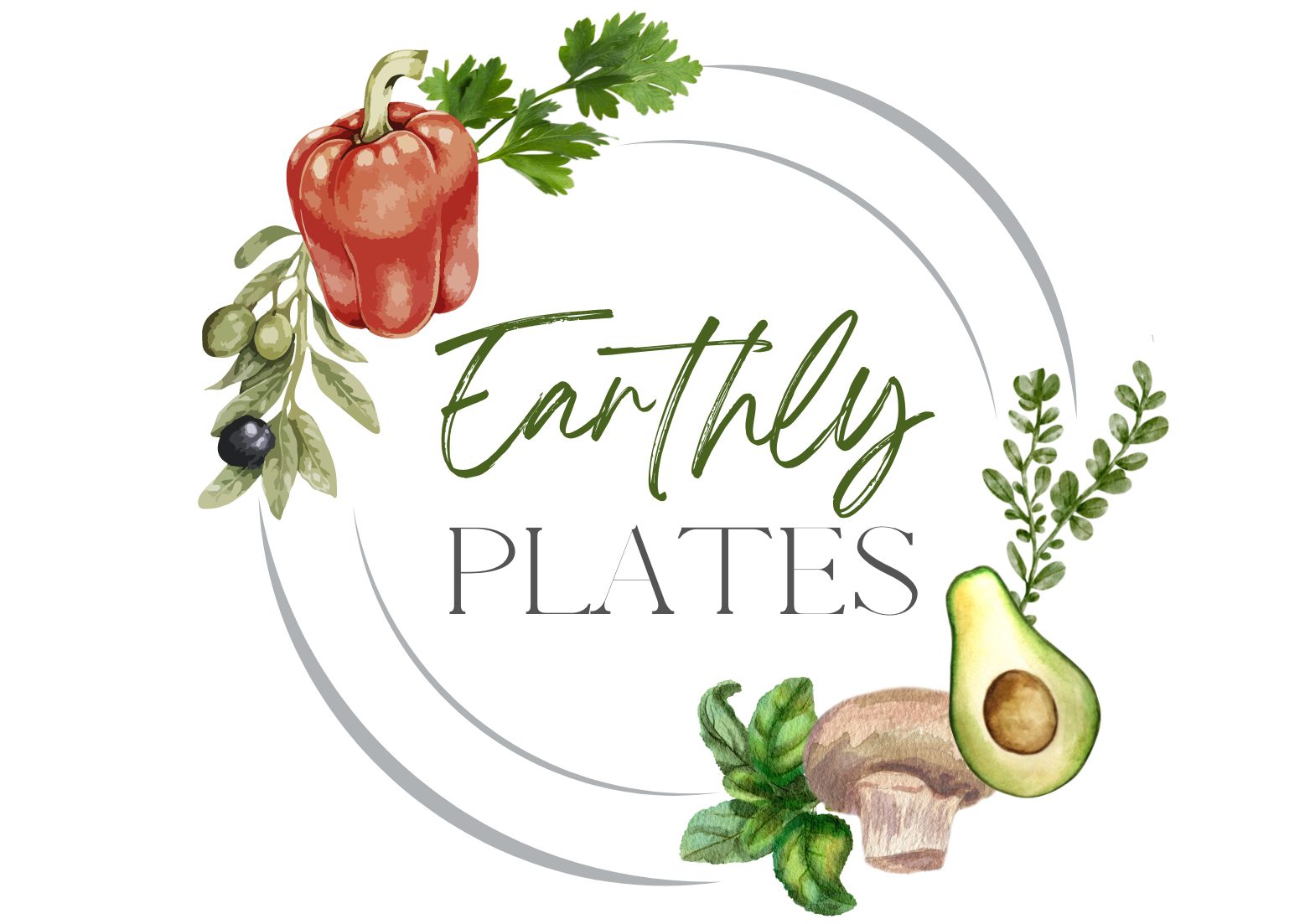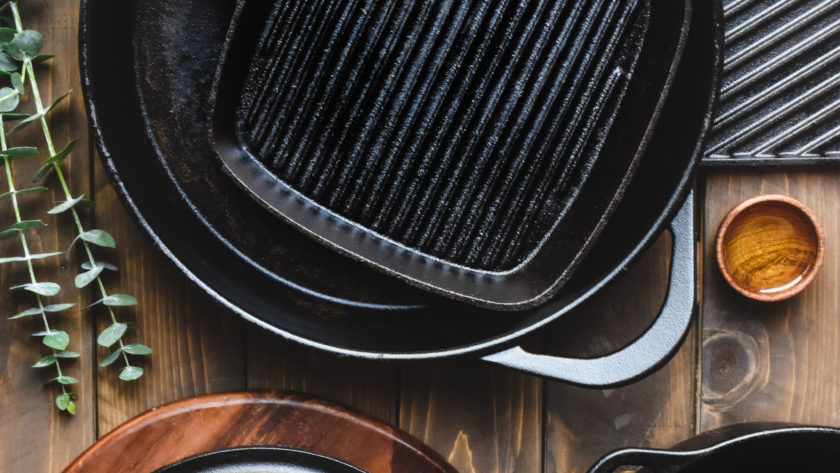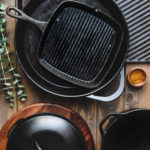Cast iron pans are where it’s at. They’re hefty, durable, last forever, stay hot forever, are easy to clean, and are just fuckin’ badass. Plus, you can use whatever utensils you want on them without running the risk of damaging the pan and swallowing small flakes of Teflon. Even among the most avid cast iron cookers, every now and again, these pans require a little TLC.

What is seasoning?
Contrary to the name, seasoning a cast iron does not include any spices or flavor. Rather, seasoning refers to applying a thin layer of oil or fat onto the pan and allowing it to form a protective, nonstick layer through the use of heat.
When the oil is heated, it carbonizes and binds with the porous metal through a process called polymerization. The polymerized oil essentially creates a layer of plastic and this is what makes the pan stick-proof and rust-proof. Cooking with oils and fats will season the pan slowly over time, creating layers upon layers of seasoning, but you could accelerate this process by baking oil into it.
There are two ways to season a cast iron pan:
- Cook with it
- Apply oil & bake
Why season?
Iron is a great element for cookware because it has a high heat capacity, meaning when it gets hot, it stays hot. Iron can be easily be transformed into a myriad of different shapes for cookware, accommodating various cooking methods. However, a bare cast iron pan itself is very reactive and can rust within minutes, and if you try cooking directly on it, sticking will become a problem. That’s where seasoning comes into play. It comes to help fill the porous holes on the surface of the iron, creating a protective layer that prevents rust and sticking.

How to season a cast iron pan
Step 1: Wash and dry the pan
Wash your cast iron pan in hot, soapy water and remove any unwanted particles with a sponge. Avoid using steel wool or an intense scrubber unless you plan on completely stripping and removing the seasoning. When it’s clean, dry it thoroughly with a cloth or paper towel.
Step 2: Rub a thin layer of oil onto the pan
Rub a small amount of neutral-flavored oil with a high smoke point onto the pan. This can be anything from vegetable oil, avocado oil, coconut oil(although some suggest not to use a saturated fat), or any other oil you prefer to use. Apply just enough oil(about 1 teaspoon) to coat the entire pan, including the top, bottom, and handle(s). Use a cloth or paper towel to buff the oil out. Don’t apply too much, or you risk the chance of it pooling up and becoming sticky, or it dripping all over your oven. The pan should not look greasy after the application of oil.
Step 3: Bake upside down at 450° for 1 hour
Preheat your oven to 450°, and once it’s hot, place the pan upside down in the oven and allow it to bake for an hour. To protect the bottom of your oven from oil drips, place a baking pan or a sheet of aluminum foil under the upside-down cast iron pan, but if you applied the thinnest layer of oil possible, this shouldn’t be a problem. Once the hour is up, turn off the heat and let the pan cool in the oven. To ensure a solid and protective layer of seasoning, repeat steps 2 and 3 as many times as desired. Do keep in mind that whenever you cook with oil or fat, another layer of seasoning will be added to the pan.
When to season?
Most new commercial cast iron pots and pans come with their own layer of seasoning already applied, but it’s in your best interest to add additional layers to ensure the best performance from your pan.
When you notice your cast iron pan beginning to look a little dull and dry, it might be time to give it a good seasoning. A properly seasoned cast iron pan will be a dark charcoal color and have a slight gloss, but not a greasy look. You should be able to see some light reflection, but if you wipe your finger across it, it won’t look like you just picked up a greasy french fry.
If you really want to go above and beyond in protecting those layers of seasoning, rub a thin layer of oil on a warm pan after each clean.
Proper maintenance and care
When cleaning your cast iron pan after cooking, avoid using soap and abrasive scrubbing pads, as this will wear down the seasoning.
If the pan is looking dull after cooking and cleaning, buff a small amount of oil onto the pan while it is still hot and let it sit.
Foods that could remove seasoning in a pan
Some layers of seasoning on your cast iron pan can be stripped away by cooking acidic foods. I always consider these acidic and common ingredients when thinking of what pan to use while cooking:
- Tomatoes
- Vinegar
- Citrus
- Wine
Although a well-seasoned pan can handle these foods for short periods of time, it’s best to avoid cooking these acidic foods in new or weakly seasoned cast iron pans.
Cooking acidic foods for long periods of time in a cast iron pan will also create a safe but unpleasant metallic taste, so it’s best to avoid these ingredients, anyway.
🖤 M
How to Season Cast Iron Pans
Materials
- 1 tsp neutral oil per pan
Instructions
- Step 1: wash and dry the pan
- Step 2: rub a thin layer of oil onto the pan.
- Step: bake upside down at 450° for one hour.



